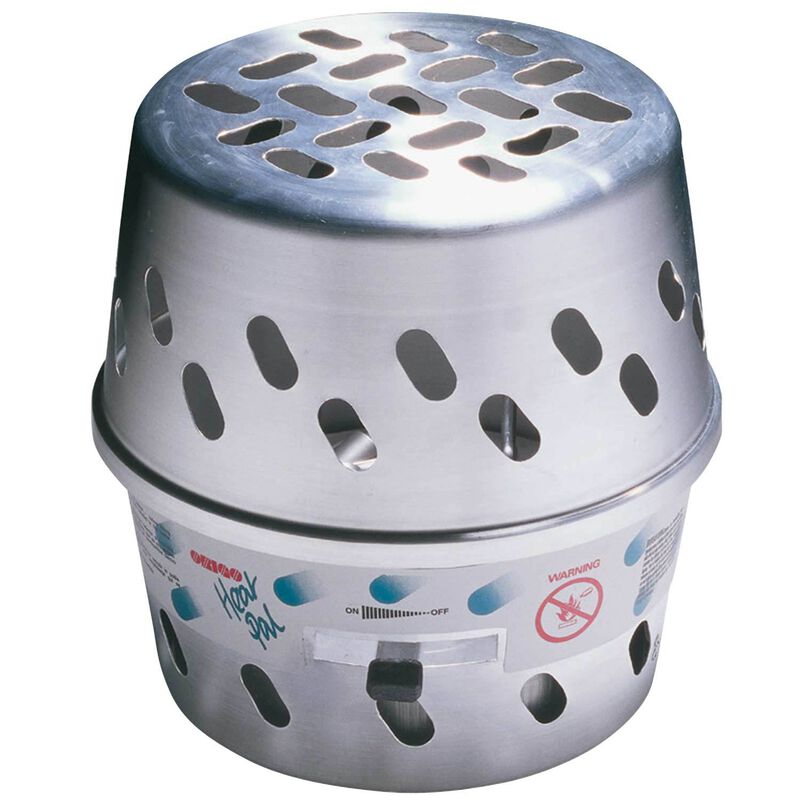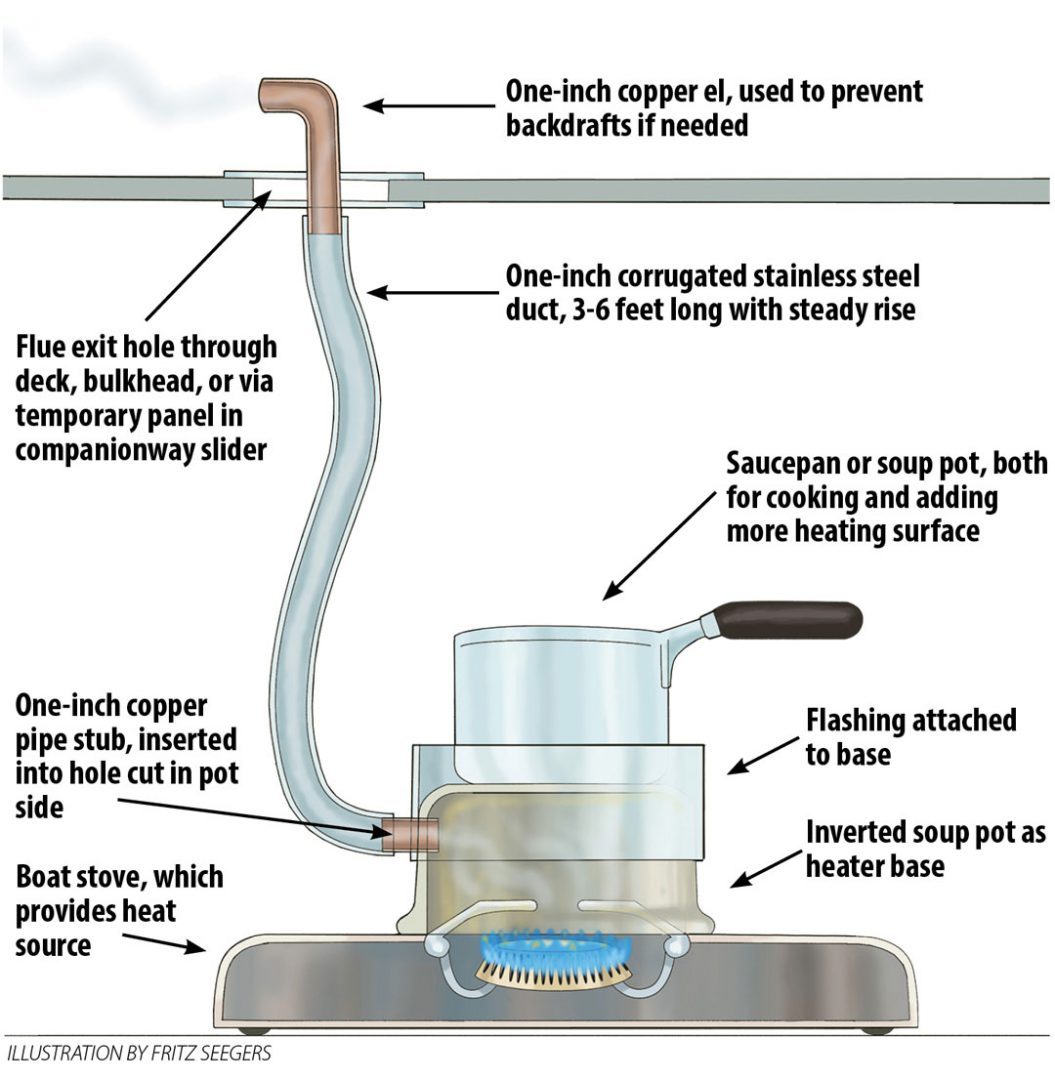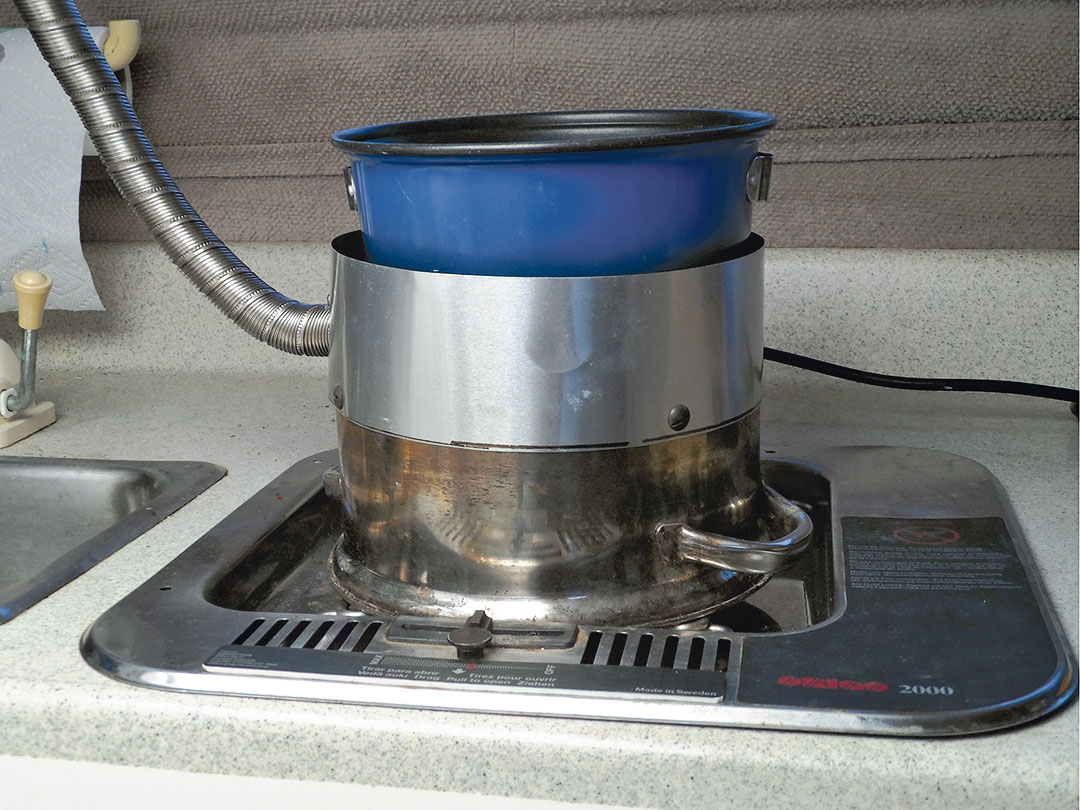What are the owners of 35-40 ft mono hulls using for cabin heat at anchor? I have seen the Dickerson heaters and the Chinese diesel heaters. A Dickerson would be nice, but it takes up space and is a bit pricey.. The Chinese heaters seem over complicated and I'm told they are annoyingly loud. I'm not a fan of Buddy heaters, they don't seem as safe as diesel heat. Do any of the DIY oil lamp heaters actually work? Any suggestions are appreciated....

Cabin heating...
85 reading
-
SailNet is a forum community dedicated to Sailing enthusiasts. Come join the discussion about sailing, modifications, classifieds, troubleshooting, repairs, reviews, maintenance, and more!
1 - 20 of 35 Posts
- Reaction score
- 215
What are the owners of 35-40 ft mono hulls using for cabin heat at anchor? I have seen the Dickerson heaters and the Chinese diesel heaters. A Dickerson would be nice, but it takes up space and is a bit pricey.. The Chinese heaters seem over complicated and I'm told they are annoyingly loud. I'm not a fan of Buddy heaters, they don't seem as safe as diesel heat. Do any of the DIY oil lamp heaters actually work? Any suggestions are appreciated....
Joined
·
7,607 Posts
- Reaction score
- 6,052
It depends on how much heat you need. I've spent my entire cruising life in what most would consider cool/cold areas (Lake Superior, now Newfoundland). My only heat source has been a simple alcohol heater:
![Image]()
My boat is a 37-footer, but it is old, so has a much smaller interior space than modern boats. I likely have a higher tolerance for cold temperatures than many. And I usually only cruise from late spring to mid-fall. But this is all the heater I've ever needed in over two decades of seasonal cruising. It's cheap, easy, and effective (for me).
If I were going to be year-round on the boat, I'd likely install a diesel drip heater, or perhaps a wood stove.

My boat is a 37-footer, but it is old, so has a much smaller interior space than modern boats. I likely have a higher tolerance for cold temperatures than many. And I usually only cruise from late spring to mid-fall. But this is all the heater I've ever needed in over two decades of seasonal cruising. It's cheap, easy, and effective (for me).
If I were going to be year-round on the boat, I'd likely install a diesel drip heater, or perhaps a wood stove.
- Reaction score
- 215
Thanks for the reply. Does the liquid alcohol burning add to the condensation problems?It depends on how much heat you need. I've spent my entire cruising life in what most would consider cool/cold areas (Lake Superior, now Newfoundland). My only heat source has been a simple alcohol heater:
![Image]()
Joined
·
407 Posts
- Reaction score
- 262
I have a couple Weems & Plath oil lamps. They kick off a fair amount of heat. Still not safe enough for overnight use though, a nice sleeping bag solves that.
I used a Mr. Buddy for a few minutes in the morning to earn the boat up while getting up & dressed. It goes off for the rest of the day except maybe at night to reverse the process.
I used a Mr. Buddy for a few minutes in the morning to earn the boat up while getting up & dressed. It goes off for the rest of the day except maybe at night to reverse the process.
Joined
·
7,607 Posts
- Reaction score
- 6,052
Yes, it likely does, although I've never noticed a problem with any added moisture. We are always careful to have good ventilation when running the burner. Carbon monoxide is a danger to be aware of.Thanks for the reply. Does the liquid alcohol burning add to the condensation problems?
- Reaction score
- 705
Seems a bit pricey though. $200 for the unit and it looks like $40-$80 per use?
Probably works way better than our tea lights with an upturned claypot over them
![Image]()
Probably works way better than our tea lights with an upturned claypot over them
Yes, it likely does, although I've never noticed a problem with any added moisture. We are always careful to have good ventilation when running the burner. Carbon monoxide is a danger to be aware of.
- Reaction score
- 705
Oh, and we have a webasto diesel hydronic heater as well. But frankly we hardly ever use it as it is often cranky after months of not being used and the fan units draw a lot of power. So it it tends to be used only on those mornings we get up and the temp has dipped below 10°C. But a couple of hours use is enough to carve a days worth of anchor off our batteries (no solar as of yet) so we would usually rather dress warmly and bake bread rather than use it.
Joined
·
7,607 Posts
- Reaction score
- 6,052
I guess the burner is pricey ... what's not pricey in the boating worldSeems a bit pricey though. $200 for the unit and it looks like $40-$80 per use?
Probably works way better than our tea lights with an upturned claypot over them
Early on I tried the upturned clay pots. Never produced much heat. Can't produce more than the source, after all.
The Webasto-type of heaters look great, but are power hogs, and seem to be rather prone to problems, and are hard to repair. If I were to install a permanent heater, I'd rather go with a simple diesel drip, or a wood stove.
Unless you're year-rounding in a cold, damp place (like the BC west coast), or are doing serious high-latitudes travel, you really don't need much heat to be comfortable in a smallish sailboat. There's not much space to heat, and as you say, it's probably better to throw on a sweater, or bake some bread.
Actually, I've thought about using heated blankets or clothing. There's lots available now, including battery-powered stuff as well as direct DC. I think this makes a lot more sense for most cruisers.
ADD: I should add, that I usually only need to pull out my heater a few times each season -- sometimes it never sees use. We rarely use more than a 4l jug in a season. And that's for Newfoundland cruising.
- Reaction score
- 705
That makes more sense. I just googled denatured alcohol and it priced out at ~$40/quart which the stove's web page said it would use in 4 or 5 hours...I guess the burner is pricey ... what's not pricey in the boating world? I bought mine so long ago, I have no idea what it costs now. But I don't know where you got the $40-$80 per use. Maybe $4. One fill takes about 1/2 of a 3.75 litre jug. This runs for ~six hours at full. I use methyl hydrate, so pretty cheap.
Joined
·
5,261 Posts
- Reaction score
- 2,264
As Mike says, how much heat do you want?
Personally, I can't imagine using any non-vented heater other than in a barn. They use oxygen, you breath the exhaust, and the cure is to open a window and let in the cold. Mostly, you are better off closing the drafts and wearing a sweater.
The best low/no cost bodge I know is based on your stove. (From Good Old Boat) You already have the heat source and it is vented. In fact, the cool is not dangerously hot by the time it gets to the deck, if it is at least 30 inches long (I have one).
If you think about it, that's all the simplest cabin heaters are. The old Cozy Cabin is nothing more.
![Image]()
![Image]()
Personally, I can't imagine using any non-vented heater other than in a barn. They use oxygen, you breath the exhaust, and the cure is to open a window and let in the cold. Mostly, you are better off closing the drafts and wearing a sweater.
The best low/no cost bodge I know is based on your stove. (From Good Old Boat) You already have the heat source and it is vented. In fact, the cool is not dangerously hot by the time it gets to the deck, if it is at least 30 inches long (I have one).
If you think about it, that's all the simplest cabin heaters are. The old Cozy Cabin is nothing more.


Joined
·
5,261 Posts
- Reaction score
- 2,264
BTW, I was testing a flower pot as a heater once, when it cracked and shot pieces across the cabin, melting a small hole in the carpet. Not for all the tea in China!
Is a non-vented heater really much different from just leaving the gas stove on? Exaust into the air. Cooking does warm the cabin, fast.
Is a non-vented heater really much different from just leaving the gas stove on? Exaust into the air. Cooking does warm the cabin, fast.
Joined
·
1 Posts
- Reaction score
- 0
.BTW, I was testing a flower pot as a heater once, when it cracked and shot pieces across the cabin, melting a small hole in the carpet. Not for all the tea in China!
Is a non-vented heater really much different from just leaving the gas stove on? Exaust into the air. Cooking does warm the cabin, fast.
Joined
·
27,697 Posts
- Reaction score
- 10,818
I agree that Buddy Heaters are not well suited for a boat. I used one to warm the salon for a winter project on the hard many years ago. I was confined with it for 5 or 6 hours. While I believe it claimed to have a CO cutoff, I was convinced I got mild CO poisoning. I got a headache and felt like weak dizzy crap right through the next day. It takes multiple times longer to get out of the blood stream, than to absorb. Your blood will actually take up CO, before O2. Bad stuff. Not to mention the possibility of a propane leak.
What is the desired need for heat? Day projects, take the edge off an occasional shoulder season overnight, or live aboard through a winter? What kind of winter matters too, ie Maine v North Carolina. If living aboard, there is nothing like installed proper heat. In NC, the water remains warm enough that a reverse cycle heat pump, from an A/C unit, will work fine, even when air temps dip below freezing overnight, but not in Maine. If super cold and living aboard, I’d install a hydronic diesel heater, so heat can be properly distributed. I hate open flames on a boat, but these units are well contained. Stove top would be a pass for me, other than emergency.
I‘ve always been attracted to the idea of a wood burning heater aboard, but unless you can handle the mess and wood storage, I doubt these are much fun over the long term. Plus, you’d probably never want it burning, while you’re off the boat. How about when asleep? I leave the reverse cycle pumps running, when ashore and return to a nice warm cabin.
Just in the past few years, we’ve discovered the best overnight warmth ever. A heated mattress pad, (not heated blanket), with dual controls so you don’t end up divorced over it. We prefer it over leaving heat on in our stateroom. Heat stays on in the salon. We can run the mattress pads all night off our inverter too, when at anchor. They take less power than one might imagine, especially as you have to turn them to low to even tolerate the heat all night. Although, cranking them to high, just before climbing in at night is pretty nice.
We prefer it over leaving heat on in our stateroom. Heat stays on in the salon. We can run the mattress pads all night off our inverter too, when at anchor. They take less power than one might imagine, especially as you have to turn them to low to even tolerate the heat all night. Although, cranking them to high, just before climbing in at night is pretty nice.
What is the desired need for heat? Day projects, take the edge off an occasional shoulder season overnight, or live aboard through a winter? What kind of winter matters too, ie Maine v North Carolina. If living aboard, there is nothing like installed proper heat. In NC, the water remains warm enough that a reverse cycle heat pump, from an A/C unit, will work fine, even when air temps dip below freezing overnight, but not in Maine. If super cold and living aboard, I’d install a hydronic diesel heater, so heat can be properly distributed. I hate open flames on a boat, but these units are well contained. Stove top would be a pass for me, other than emergency.
I‘ve always been attracted to the idea of a wood burning heater aboard, but unless you can handle the mess and wood storage, I doubt these are much fun over the long term. Plus, you’d probably never want it burning, while you’re off the boat. How about when asleep? I leave the reverse cycle pumps running, when ashore and return to a nice warm cabin.
Just in the past few years, we’ve discovered the best overnight warmth ever. A heated mattress pad, (not heated blanket), with dual controls so you don’t end up divorced over it.
- Reaction score
- 7,890
Okay boys and girls, it's time to crank up the "way back machine" (a reference for you Rocky and Bullwinckle fans) and go way back before aught-aught.
In the days when I was a whippersnapper, and Sears Robuck published a massive mail order catalog (and there were such things as mail order catalogs), heaters were an optional item on base level cars and trucks. (No kidding).
Sears and the various automotive mail order companies used to sell small car heaters. These typical were a small water coil (radiator) that had a metal box with a small fan that blew air through the water coil in much the same way that your heater in your car works. They were plumbed to the fresh water side of the engine cooling water.
Recently I talked to a fellow who sails on Lake Champlain typically past the point in the season when sailing temperatures are comfortable. He built a small cabin heater out of a water coil he salvaged out of a minivan at a junk yard.
He built a wooden box housing, and used the diverter valve from a car, and a fan from a computer to complete his cabin heater.
He said that he runs the engine 20 minutes to a half hour in the morning and evening which charges the batteries and tempers the cabin temperatures quite nicely.
I am beginning to think that I may do something like that myself.
Jeff
In the days when I was a whippersnapper, and Sears Robuck published a massive mail order catalog (and there were such things as mail order catalogs), heaters were an optional item on base level cars and trucks. (No kidding).
Sears and the various automotive mail order companies used to sell small car heaters. These typical were a small water coil (radiator) that had a metal box with a small fan that blew air through the water coil in much the same way that your heater in your car works. They were plumbed to the fresh water side of the engine cooling water.
Recently I talked to a fellow who sails on Lake Champlain typically past the point in the season when sailing temperatures are comfortable. He built a small cabin heater out of a water coil he salvaged out of a minivan at a junk yard.
He built a wooden box housing, and used the diverter valve from a car, and a fan from a computer to complete his cabin heater.
He said that he runs the engine 20 minutes to a half hour in the morning and evening which charges the batteries and tempers the cabin temperatures quite nicely.
I am beginning to think that I may do something like that myself.
Jeff
Joined
·
7,607 Posts
- Reaction score
- 6,052
Unless you need serious heat, I really think the way to go is electric. Electric blankets and mattress are great, and don't take much power. And there's a now a whole range of wearable heated clothing. Best of all, electricity is a renewable, and free* power source.
My partner has a hoodie that she loves. It runs off a lithium battery that we keep charged while cruising. There are lots of companies that sell this stuff now, but this is here's:

 www.ororowear.ca
www.ororowear.ca
* Nothing is free. But most of us generate our electricity from the alternator, or solar/wind.
My partner has a hoodie that she loves. It runs off a lithium battery that we keep charged while cruising. There are lots of companies that sell this stuff now, but this is here's:

Heated Fleece Hoodie for Men or Women | Up to 10 Hrs of Heat | ororo®
This fleece hoodie is a casual staple, made from thicker, softer fabric for ultra-comfy warmth. It features core warming zones on the front and back.
 www.ororowear.ca
www.ororowear.ca
* Nothing is free. But most of us generate our electricity from the alternator, or solar/wind.
Joined
·
18 Posts
- Reaction score
- 17
We're in the PNW. I thoroughly researched heaters a couple of years ago for my 33' sailboat. Looked at the Chinese diesel heaters. Considered hydronic due to the impossiblity of running ductwork very far. I decided to splurge on a Webasto EVO40 with a single duct in the galley. It might be a little bit oversized, but it has been the best upgrade on the boat, bar none. I would say it has worked flawlessly since installation, but I wouldn't want Nepture to get all jealous and smite it, especially with winter coming and a Thanksgiving trip planned.
The Webasto replaced a Siig propane heater. It barely heated the cabin in winter and put a LOT of moisture in the air. We did a Christmas trip a few years ago and it was literally raining in the cabin. You can't beat warm, clean, dry air in winter, doubly so in the PNW.
The Webasto replaced a Siig propane heater. It barely heated the cabin in winter and put a LOT of moisture in the air. We did a Christmas trip a few years ago and it was literally raining in the cabin. You can't beat warm, clean, dry air in winter, doubly so in the PNW.
Joined
·
76 Posts
- Reaction score
- 75
We've been using the Chinese diesel heaters for years.
We leave it in the cockpit and run the hose through the companionway slat vent.
Never failed. Cant see the digital controller in the sunlight so we got the round knob controller. Works great for 50ish weather. Never been in colder temps than that.
We leave it in the cockpit and run the hose through the companionway slat vent.
Never failed. Cant see the digital controller in the sunlight so we got the round knob controller. Works great for 50ish weather. Never been in colder temps than that.
Joined
·
6 Posts
- Reaction score
- 1
Sailing around the UK I would in terms of noise, heat and safety go with an Eberspacher Eberspacher Heaters And Parts | Eberspacher Direct
or Webasto ones https://www.webasto.com/en-int/heating/rv-heater.html
The marine models are sometimes markers more expensive than the camping ones.
or Webasto ones https://www.webasto.com/en-int/heating/rv-heater.html
The marine models are sometimes markers more expensive than the camping ones.
Joined
·
76 Posts
- Reaction score
- 75
I forgot to mention, regarding Chinese heater, is that they are exact duplicate of the German Eberspacher heaters. I ordered rebuild kits from Eberspacher but haven't needed to use them after 4 seasons of use.
As others have noted, an important input on your decision making is your electrical budget.
On that side, there a huge advantages going with a traditional drip fed diesel or even a wood burner.
To answer original question…
Many years ago had a wood heater in a 30 footer here in PNW and worked well even for winter weeklong outings. At anchor, after we learned to trust it and the associated insulated components - we would put a small lump of brown in it towards the evening. Nothing a couple buckets of seawater couldn’t handle regarding soot, but probably anybody anchored downwind hated us. 🤷♂️⛵
Currently using an interim solution that somebody else mentioned, which is a ‘chinese diesel’ in suitcase format with associated upgrades. Still deciding if I want to tolerate the electrical consumption. Those amps add up when out for a few weeks. Especially here in PNW where the days are a little shorter, sun angle is lower, and the solar makes less. Big bonus for me using those amps is the forced blowing of the heat through the boat to mitigate humidity - both in the living spaces and also the nooks & crannies.
On that side, there a huge advantages going with a traditional drip fed diesel or even a wood burner.
To answer original question…
Many years ago had a wood heater in a 30 footer here in PNW and worked well even for winter weeklong outings. At anchor, after we learned to trust it and the associated insulated components - we would put a small lump of brown in it towards the evening. Nothing a couple buckets of seawater couldn’t handle regarding soot, but probably anybody anchored downwind hated us. 🤷♂️⛵
Currently using an interim solution that somebody else mentioned, which is a ‘chinese diesel’ in suitcase format with associated upgrades. Still deciding if I want to tolerate the electrical consumption. Those amps add up when out for a few weeks. Especially here in PNW where the days are a little shorter, sun angle is lower, and the solar makes less. Big bonus for me using those amps is the forced blowing of the heat through the boat to mitigate humidity - both in the living spaces and also the nooks & crannies.
1 - 20 of 35 Posts
-
?
-
?
-
?
-
?
-
?
-
?
-
?
-
?
-
?
-
?
-
?
-
?
-
?
-
?
-
?
-
?
-
?
-
?
-
?
-
?
- posts
- 1.7M
- members
- 180K
- Since
- 1990
A forum community dedicated to Sailing, boating, cruising, racing & chartering. Come join the discussion about sailing, destinations, maintenance, repairs, navigation, electronics, classifieds and more
Top Contributors this Month
View All
Minnewaska
110 Replies
OntarioTheLake
51 Replies
colemj
42 Replies



